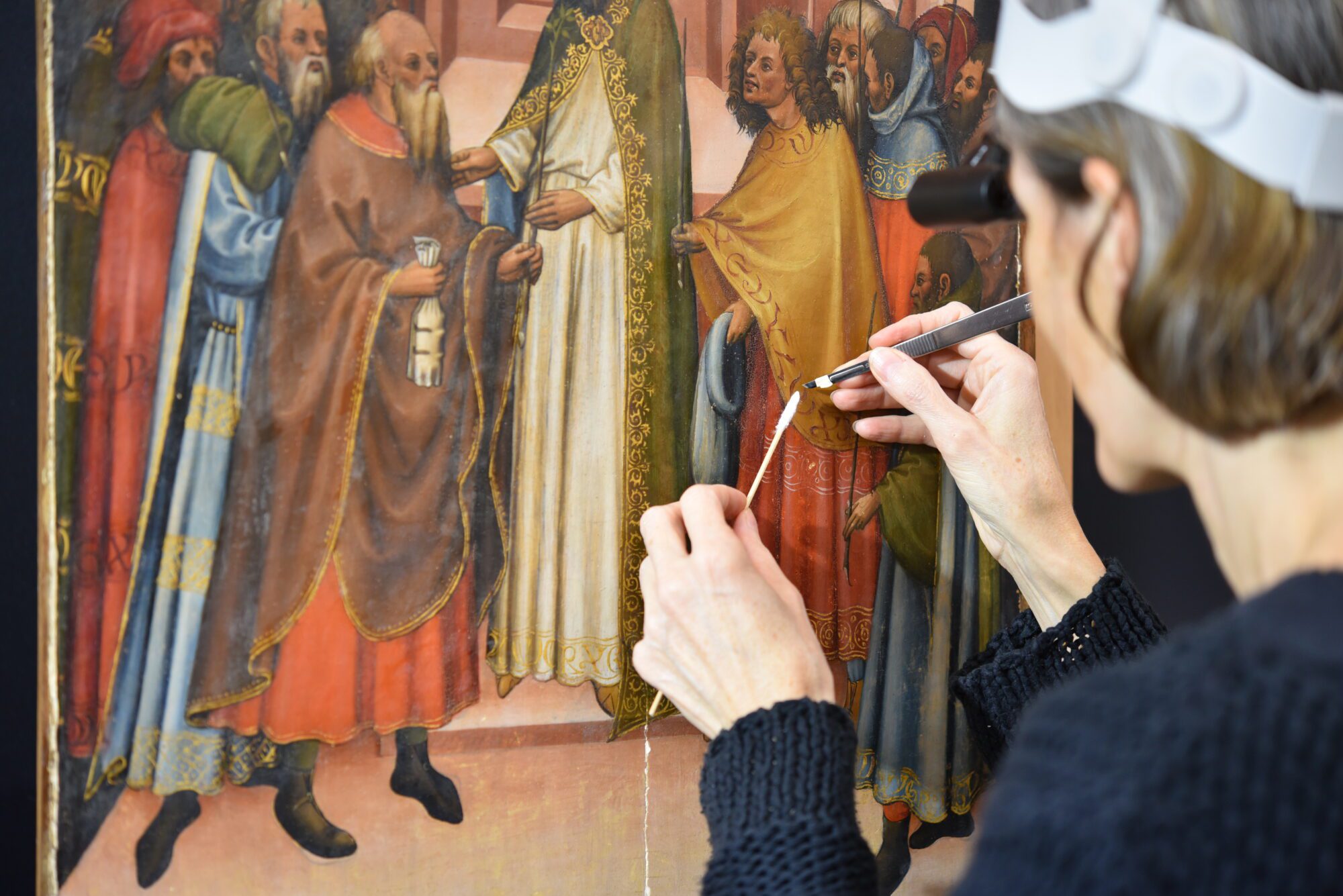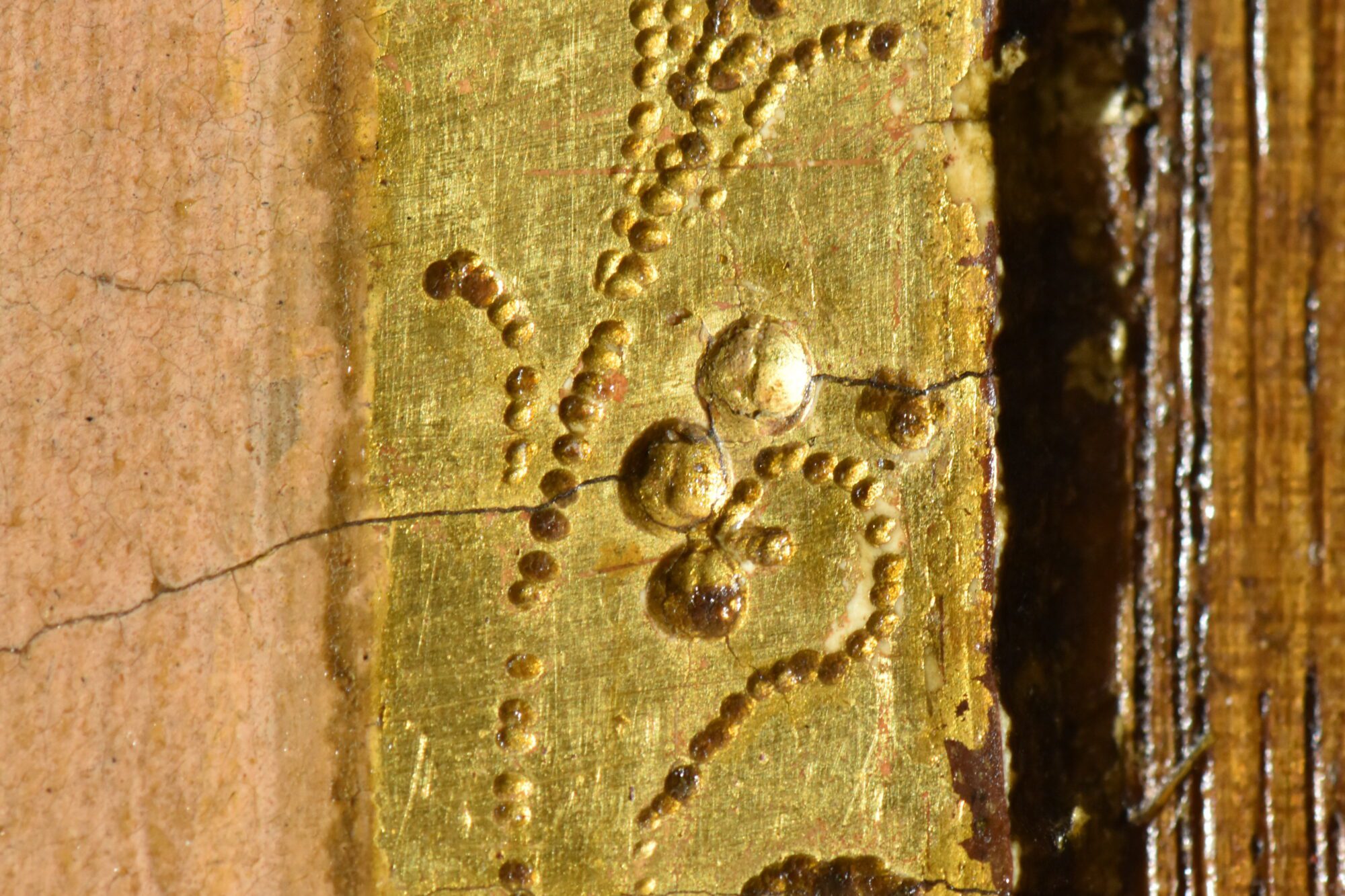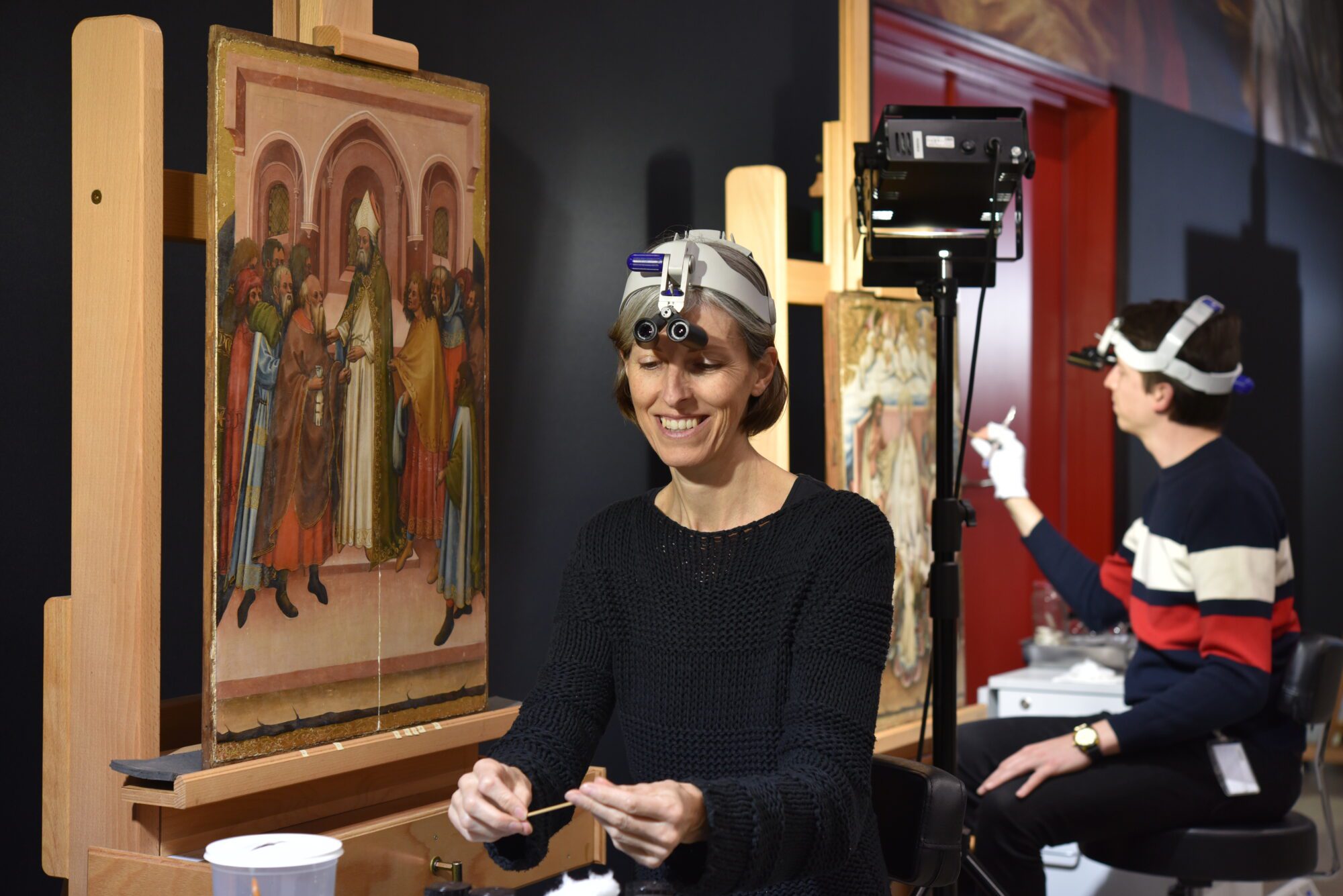Conservation treatment of the oldest oil painting in our collection
Take a look behind the scenes at the restoration treatment of one of the oldest oil paintings from the collection of The Phoebus Foundation. Dating from c.1418-25, the artwork is even older than the famous Ghent Altarpiece by the brothers van Eyck (1432). Consisting of four panels, dedicated to the Virgin Mary, it was probably originally part of a larger altarpiece.

If you look closely, you can see that the artist was already very progressive by casting shadows on his figures, giving them a three-dimensional character. However, a technical cast shadow is still missing, which indicates that we are at an important turning point in Western art history. For this reason, we recently decided to start an extensive conservation treatment. During the treatment we hope to learn more about the geographical origin of the panels and about the methods and materials used by the painter.

At the start of the restoration it turned out that both the execution and the gilding on the panel were in good condition. The treatment mainly provides for the removal of discoloured and outdated layers of dirt so that the sparkling colours can be visible again. Special care is required, especially on the fragile gilding. In the 15th century, the artist made small impressions in the gold leaf by using metal awls or punches in order to obtain the floral motifs in the upper part of the painting (heaven) which make this work so special. By removing the varnish and dirt, these motifs finally became visible again.

The conservation treatment is spread over 3 years and is carried out by Sven Van Dorst, head of the conservation studio of The Phoebus Foundation, in collaboration with Hilde Weissenborn, an independent conservator specialized in the treatment of 15th and 16th century Flemish masters.
